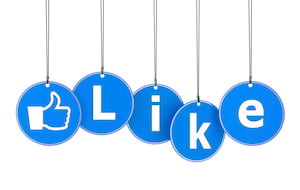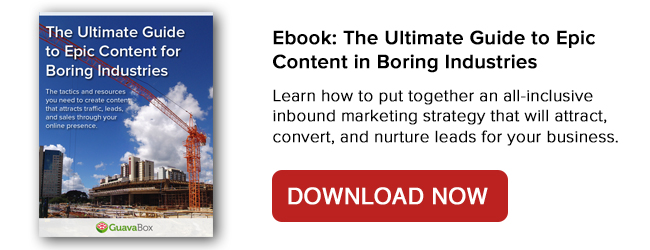 Smart inbound marketers plan their content around inbound marketing campaigns. There are three key elements to an inbound marketing campaign: a beginning date, an end date, and a goal. With these three elements in place, you can measure the effectiveness of your inbound marketing efforts.
Smart inbound marketers plan their content around inbound marketing campaigns. There are three key elements to an inbound marketing campaign: a beginning date, an end date, and a goal. With these three elements in place, you can measure the effectiveness of your inbound marketing efforts.
On a basic level, the objective you’re trying to achieve in an inbound marketing campaign is a conversion point. This conversion point happens on a landing page with a form. It can be something like an eBook download, signing up for a demo, or registering for an event.
There are tons of tools that inbound marketers can use to promote, share, and point traffic toward their desired conversion point: write a blog post, send an email to a segment of their database, shoot a video and upload to YouTube, share on social media, and the list goes on.
A social ad campaign is another one of those tools and it can be an easy way to give your inbound campaign a needed boost. Facebook’s recent update to their ad platform gives inbound marketers a fantastic structure for managing their inbound ad budgets.
Facebook’s New Campaign Structure
The new structure breaks promotion down into campaigns, ad sets, and ads. The campaign represents the objective of your ads, like driving traffic to a specific landing page. This lines up with the goal of your inbound marketing campaign.

Each Facebook ad campaign is made up of several ad sets. These ad sets operate on their own budget and schedule. Each ad set can target a different audience segment giving you the chance to create unique ads for your different buyer personas.
Within each ad set, you can create multiple ads. This gives you the chance to A/B test conversion rates within a specific audience segment. Looking at your click-to-conversion rates, you can quickly identify the images and ad copy that resonate well with your buyer personas.
Making it Work for You
Everything starts by organizing all of your campaign activity within your marketing software. Every tool in the inbound marketing toolbox can be measured within a campaign.
For example, let's say we have a campaign set up for The Ultimate Guide to Epic Content for Boring Industries. We’re nearing the end of the month, but we’re still a bit short of our lead goals so we decide to run a Facebook ad campaign.
1) Create a Tracking URL
The first thing we need to do is create a tracking URL for our landing page. We do this by taking the original URL we wish to share and pasting it into HubSpot’s tracking URL Builder. Here you can also select the campaign that goes along with the URL.

After clicking “Generate” both a long and a short tracking URL will be created. Now we’re going to take these URLs and use then in our Facebook Ad campaign.

2) Select Type of Campaign in Facebook
With the tracking URL, we can now exit HubSpot and navigate to Facebook’s ad manager. Facebook offers loads of options when it comes to the type of ad you’d like to share. For this example we’re going to use a website conversion as our ad type.

When you create a website conversion goal, you’re going to need to add a bit of code to the <head> section of your landing page. Copy the code that Facebook provides and add it to the <head> section of your landing page.
 In HubSpot, you can add this by clicking on “Options” in the landing page edit view and pasting in the code in the “Head Section HTML” area:
In HubSpot, you can add this by clicking on “Options” in the landing page edit view and pasting in the code in the “Head Section HTML” area:

3) Building your Facebook Ads
With the tracking URL in place and the conversion code added to your landing page, you can start to build your Facebook ad. The first step here is to add images for your ads. The recommended image size is 600 x 315 pixels. If you need a free photo creation and editing tool, check out Pixlr or Canva.

Once you have created a few images and uploaded them to Facebook’s ad manager, you can start crafting your copy and formatting your ad:

4) Specify Targeting
Next you want to choose your audience. For this ad, we want target individuals 24 years or older in the US who are interested in B2B marketing. It is important to experiment with the audience section and find what audience best fits your business. This is a great opportunity for small A/B tests to see what type of images or questions are driving traffic and conversions.
5) Determine Budget
The last thing to do is to review your campaign information and budget. It is good to set a daily limit on the amount of money that you would like to spend. This helps you to keep control of your ad spend.

The End Result

So there you have it! In just a few simple steps, you can quickly and easily create a Facebook ad campaign that can help you hit your inbound marketing campaign goals.
If you’re interested in learn more about how to create epic content to fuel your inbound marketing campaigns, then check out The Ultimate Guide to Epic Content for Boring Industries. Inside you’ll find tons of tips, tricks, and resources that will help you create more engaging content, even in the most boring industry!


